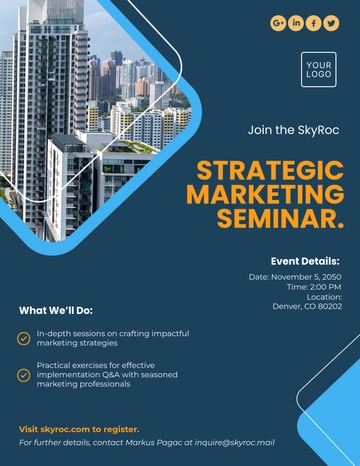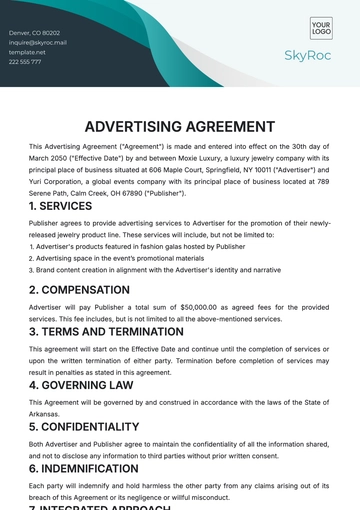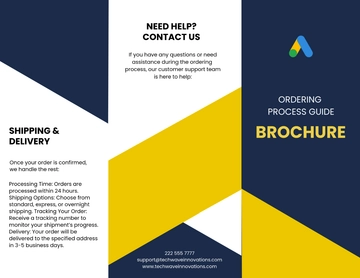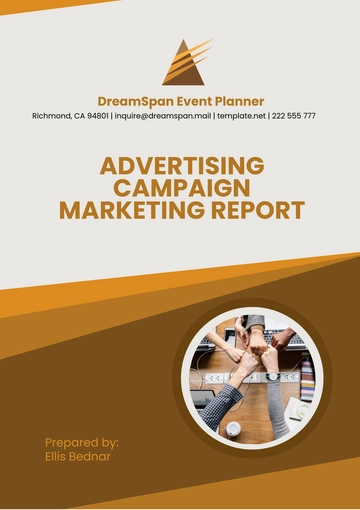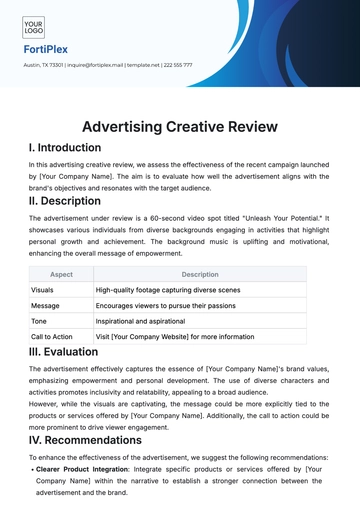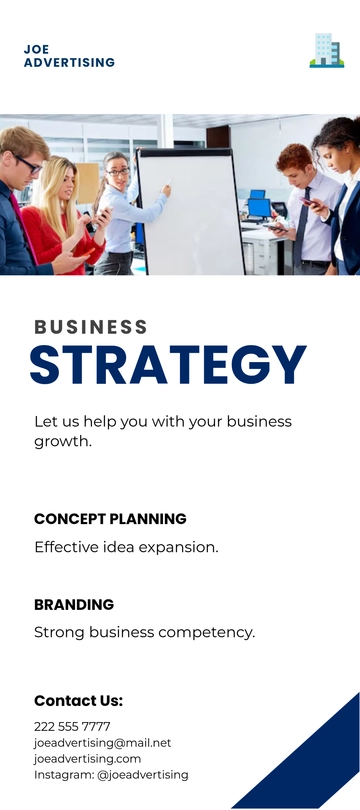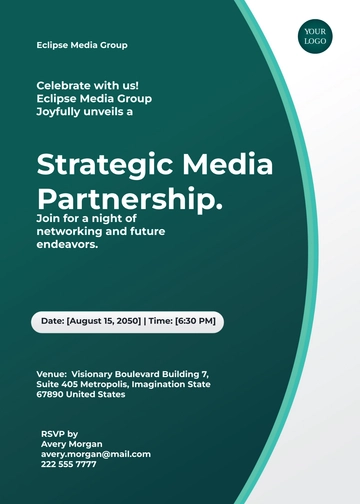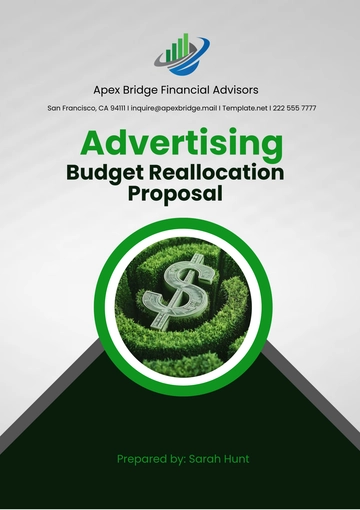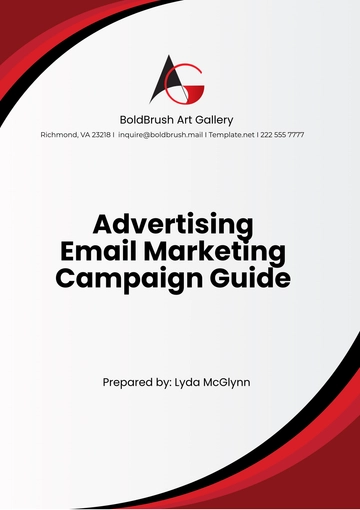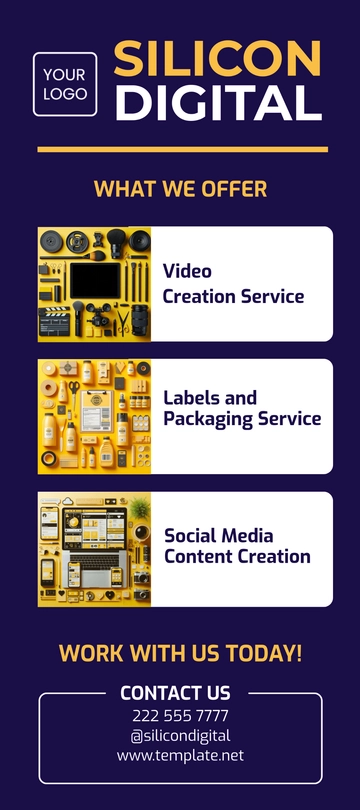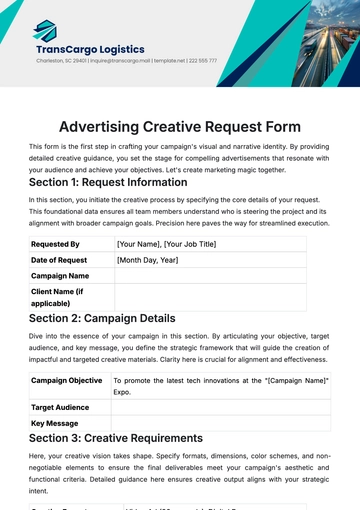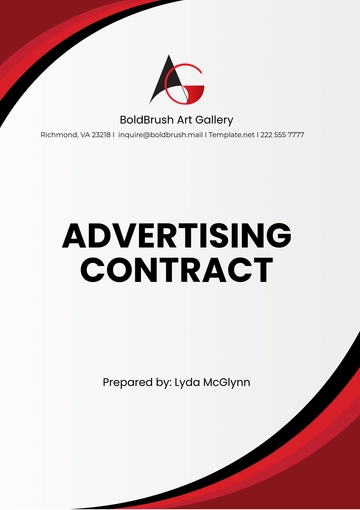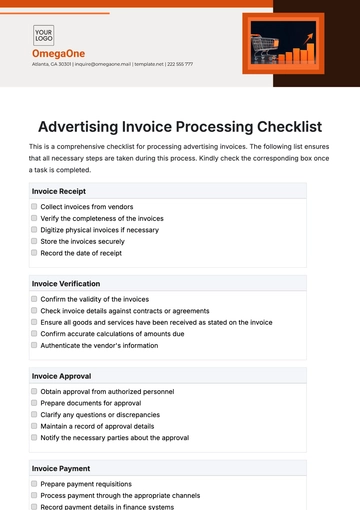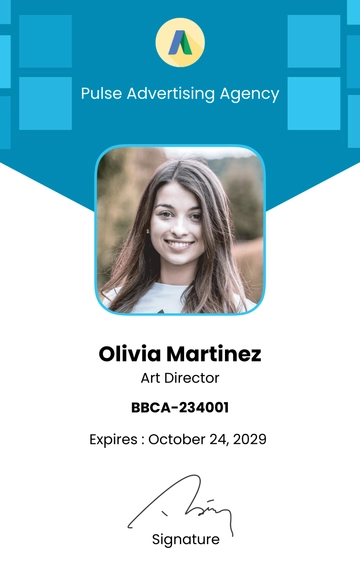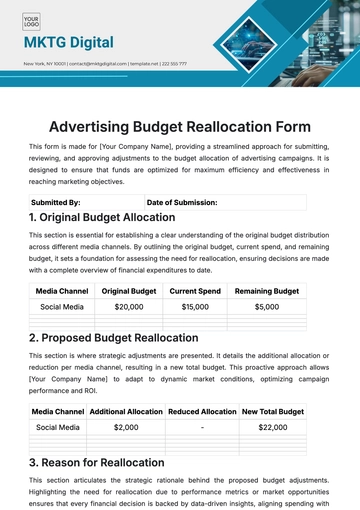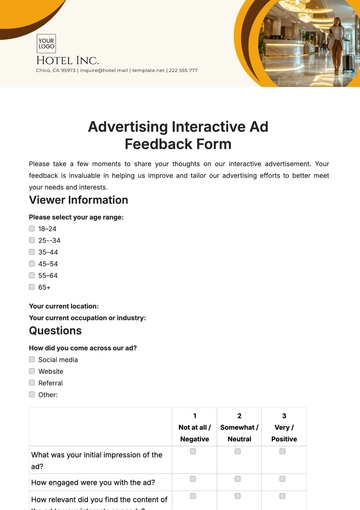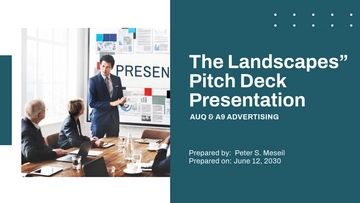Free Advertising Detailed Campaign Execution Strategy
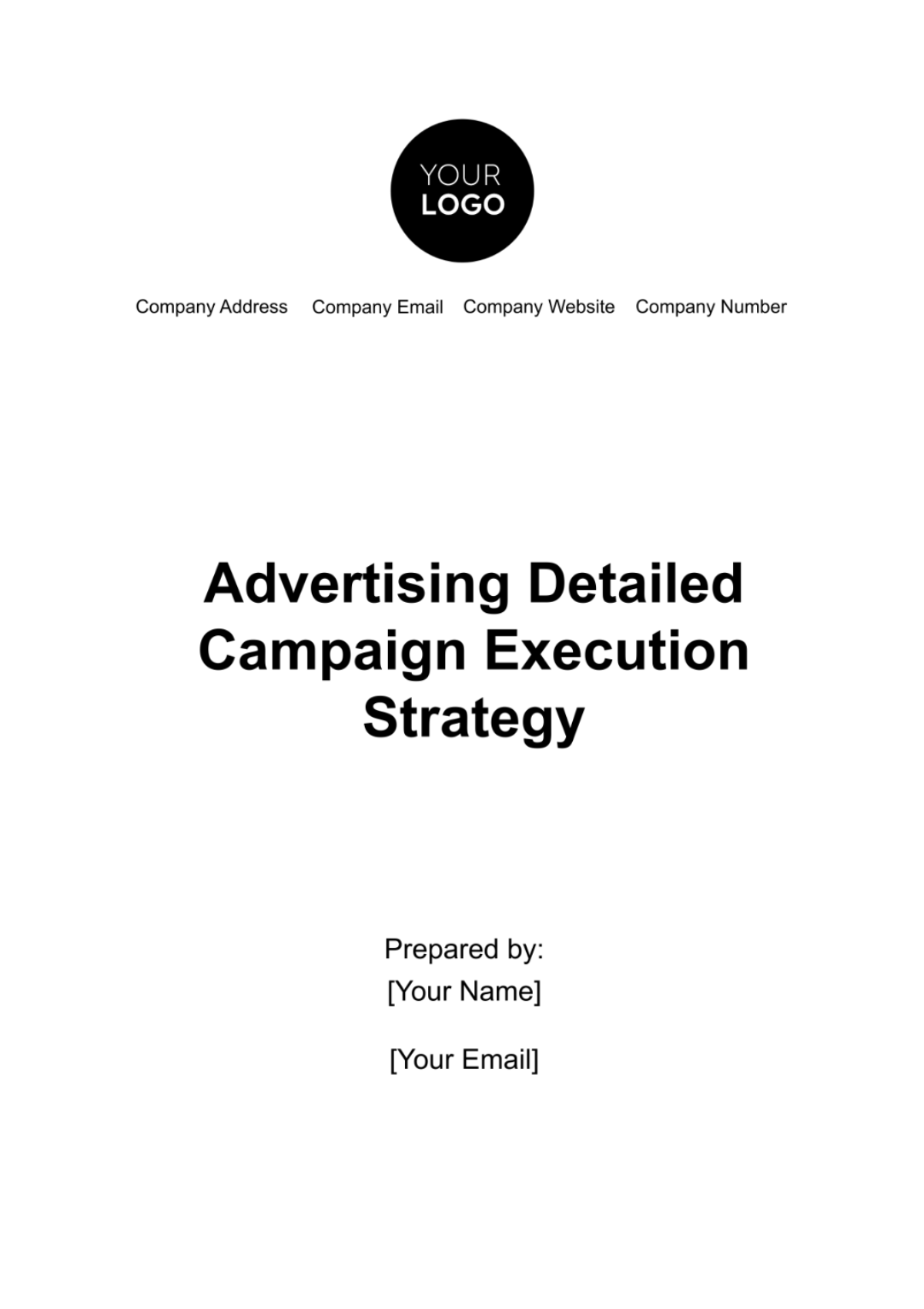
I. Executive Summary
A. Overview
[Your Company Name], a pioneering force in the [Industry] sector, renowned for its innovative [Product/Service Category], is poised to launch an ambitious advertising campaign aimed at elevating brand recognition and fostering deeper engagement with our target demographic.
This Advertising Detailed Campaign Execution Strategy offers a comprehensive roadmap, detailing the strategic initiatives and tactical maneuvers necessary to realize our advertising objectives efficiently and effectively.
II. Campaign Objectives
A. Primary Objectives
Increase brand awareness by [0%] among [Target Audience] within [Timeframe], positioning [Your Company Name] as a top-of-mind choice in the [Industry] market.
Generate [00] leads/sales from the advertising campaign, driving tangible business growth and revenue expansion.
Enhance customer engagement by [0%] through precisely targeted advertising endeavors, fostering lasting relationships and loyalty among our consumer base.
B. Secondary Objectives
Objective | Metric | Target |
|---|---|---|
Increase website traffic | Sessions | [000] |
Boost social media followers | Followers | [000] |
Improve brand sentiment | Sentiment Score | [00] |
III. Target Audience Analysis
A. Demographics
Demographic Segment | Description |
|---|---|
Age: | Primarily [18-35] years old |
Gender: | [Male: 60%, Female: 40%] |
Income Level: | [$00,000 - $00,000] |
B. Psychographics
Psychographic Segment | Interests | Values |
|---|---|---|
Outdoor Enthusiasts | Hiking, Camping, Adventure | Sustainability, Exploration |
Tech Enthusiasts | Gadgets, Gaming, Innovation | Convenience, Technology |
Fashion-conscious | Fashion Trends, Beauty | Individuality |
C. Behavioral
Behavior Segment | Behavior |
|---|---|
Brand Advocates | Engage with brand content, Share recommendations |
Deal Seekers | Respond to promotions, Look for discounts |
Early Adopters | Try new products quickly, Value innovation |
IV. Advertising Channels
A. Digital Advertising
Social Media Platforms:
a. Facebook
b. Instagram
c. Twitter
Display Advertising:
a. Google Display Network
b. Programmatic Advertising
B. Traditional Advertising
Television Commercials
Targeting popular TV networks and channels with high viewership among our target demographic.
Print Media:
a. Magazines
Placing advertisements in lifestyle and tech magazines frequented by our target audience.
b. Newspapers
Utilizing local and national newspapers to reach a broad audience base.
C. Outdoor Advertising
Billboards
Strategic placement of billboards in high-traffic areas frequented by our target demographic.
Bus Shelters
Advertising on bus shelters in urban areas with heavy foot traffic to maximize exposure.
V. Messaging and Creative Strategy
A. Key Messaging
Highlighting "[Product Name]" unique selling points:
Seamless integration of wireless charging technology to streamline device charging.
Cutting-edge noise-canceling feature designed to enhance audio clarity.
Personalized fitness tracking functionality tailored to meet individual health goals effectively.
Conveying the brand’s value proposition:
"Empowering You to Stay Connected": Emphasizing our commitment to empowering customers to stay connected with our innovative solutions.
B. Creative Elements
Visuals: Compelling images and videos depicting:
Individuals utilizing "[Product Name]" to simplify their daily tasks.
Vibrant visuals showcasing the versatility and functionality of "[Product Name]".
Engaging lifestyle imagery reflecting the aspirational aspects of our brand.
Tone: Striking a balance between professionalism and relatability:
Employing a friendly and approachable tone to resonate with our target audience.
Infusing creativity and excitement to capture attention and evoke positive emotions.
VI. Budget Allocation
A. Digital Advertising: [$00,000]
Social Media Advertising: [$00,000] targeting platforms like Facebook, Instagram, and Twitter to engage with our audience where they spend their time online.
Display Advertising: [$00,000] allocated for Google Display Network and programmatic advertising to reach potential customers across relevant websites and apps.
B. Traditional Advertising: [$00,000]
Television Commercials: [$00,000] investing in commercials aired on prime-time slots of popular networks to maximize visibility.
Print Media: [$00,000] allocating funds for advertisements in lifestyle magazines and newspapers catering to our target demographic.
Outdoor Advertising: [$0,000] earmarking resources for strategically placed billboards and bus shelter ads in high-traffic areas.
C. Creative Production: [$00,000]
Graphic Design: [$00,000] for the creation of visually appealing ad creatives optimized for digital and print mediums.
Video Production: [$0,000] investing in professional video production to produce engaging commercials and promotional videos.
Copywriting: [$0,000] allocating funds for compelling copywriting services to craft persuasive ad messaging that resonates with our audience. D. Contingency: [$00,000]
Setting aside [$00,000] as a contingency fund to address unforeseen expenses or capitalize on emerging opportunities during the campaign duration.
VII. Timeline
A. Pre-Campaign Preparation:
Creative Development: Month 1
Conduct brainstorming sessions and collaborate with the creative team to conceptualize ad designs and messaging.
Finalize the storyboard and script for television commercials and video ads.
Platform Setup and Testing: Month 2
Set up advertising accounts on social media platforms and ad networks.
Test ad creatives and targeting parameters to ensure optimal performance.
B. Campaign Execution:
Launch Date: Month 3
Roll out advertising campaigns across digital and traditional channels.
Monitor campaign performance closely and make necessary adjustments.
Duration: 12 weeks
Run the advertising campaign for a duration of 12 weeks to maximize exposure and engagement.
C. Post-Campaign Analysis:
Data Collection: Month 4
Gather data on key performance metrics such as impressions, click-through rates, and conversion rates.
Collect feedback from customers through surveys and social media engagement.
Analysis and Reporting: Month 5
Analyze campaign performance data to identify successes, challenges, and areas for improvement.
Prepare a comprehensive report outlining the campaign's impact on brand awareness, lead generation, and customer engagement.
VIII. Performance Metrics
A. Key Performance Indicators (KPIs)
Impressions: Tracking the total number of times ads are displayed to users across various channels.
Click-through Rate (CTR): Calculating the percentage of users who click on an ad after viewing it.
Conversion Rate: Measuring the percentage of users who take a desired action, such as making a purchase or filling out a form, after clicking on an ad.
B. Tracking and Analytics Tools
Google Analytics: Utilizing Google's web analytics platform to track website traffic, user behavior, and conversion metrics.
Facebook Pixel: Implementing Facebook's tracking pixel to monitor user interactions with ads and website visits on the Facebook platform.
AdWords Conversion Tracking: Setting up conversion tracking within Google Ads to measure the effectiveness of ad campaigns in driving desired actions, such as purchases or sign-ups.
IX. Risk Management
A. Potential Risks
Ad Fatigue:
Continuous exposure to the same ad creatives may lead to audience fatigue and decreased engagement over time.
Budget Overruns:
Unforeseen expenses or inefficient budget allocation could result in exceeding the allocated advertising budget, impacting campaign performance and ROI.
Technical Glitches:
Technical issues such as website downtime, ad server errors, or platform algorithm changes may disrupt campaign delivery and performance.
B. Mitigation Strategies
Ad Fatigue:
Implement a rotating ad creative strategy to regularly refresh and diversify ad content, preventing audience fatigue and maintaining engagement levels. Conduct audience segmentation and tailor ad messaging to specific audience segments to ensure relevance and minimize ad fatigue.
Budget Overruns:
Conduct regular budget reviews and performance analyses to identify areas of overspending or underperformance and adjust budget allocations accordingly. Set aside a contingency fund to address unexpected expenses and mitigate the risk of budget overruns without compromising campaign objectives.
Technical Glitches:
Maintain open communication channels with advertising platforms and technical support teams to stay informed about any potential issues or updates that may impact campaign delivery. Implement redundant systems and backup plans to quickly address and resolve technical issues to minimize disruptions to campaign performance and delivery.
X. Conclusion
A. Summary of Key Points
The Advertising Detailed Campaign Execution Strategy provides a comprehensive framework for planning, executing, and evaluating advertising campaigns to achieve [Your Company Name]'s objectives.
By leveraging targeted messaging, creative content, and strategic channel selection, [Your Company Name] aims to maximize brand exposure, drive customer engagement, and generate tangible business results.
Effective risk management strategies are in place to mitigate potential challenges and ensure the successful execution of the advertising campaign.
B. Next Steps
Implementation of the strategy as outlined in the timeline, with close monitoring and optimization of advertising efforts based on performance data and audience feedback.
Continuous evaluation and refinement of advertising strategies and tactics to adapt to changing market dynamics, consumer behaviors, and industry trends.
Collaboration with internal teams, external partners, and stakeholders to align advertising initiatives with broader business goals and objectives for sustained growth and success.
- 100% Customizable, free editor
- Access 1 Million+ Templates, photo’s & graphics
- Download or share as a template
- Click and replace photos, graphics, text, backgrounds
- Resize, crop, AI write & more
- Access advanced editor
Craft compelling ad campaigns effortlessly with our Advertising Detailed Campaign Execution Strategy Template from Template.net. This editable and customizable template in our Ai Editor Tool streamlines campaign planning, covering objectives, target audience, channels, and timelines. Ensure seamless collaboration and efficiency across teams for successful advertising endeavors. Simplify your project management and drive impactful campaigns with this comprehensive template.
